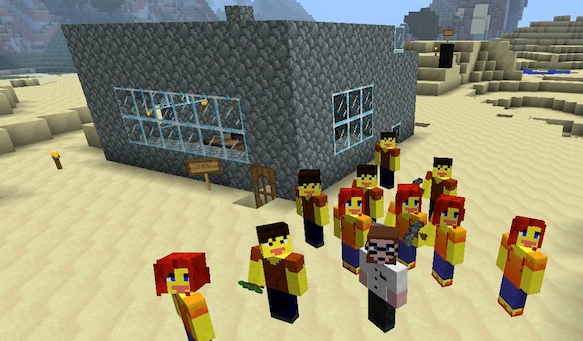
By Katrina Schwartz
Educators have been tapping into the wildly popular online game Minecraft for its potential as a learning tool for a while now -- to teach physics, math, and computer science. But until recently, the game was mostly the territory of computer science teachers, and even they were forced to use the commercial version of the online game.
So a few months ago, two teachers, Santeri Koivisto and Joel Levin, decided to make the software more accessible and relevant to teachers. They joined forces to found MinecraftEdu and started offering discounted educator licenses to Minecraft. MinecraftEdu now offers a plug-in, which enables teachers to tailor the software to individual curriculum. And a fresh new wiki is dedicated to sharing ideas with topic suggestions such as “How To Use Redstone, (a fictional mineral) To Teach Electricity.” Teachers can also work with others to co-develop lesson plans within the game software.
Teachers like to use Minecraft because it's a “sandbox” game -- it provides players nearly limitless freedom to build within it. As a player’s skill develops, the game’s complexity increases ad infinitum. In multi-player levels, players collaborate on building complex structures, use programming features to build contraptions, games, or compose music. Meanwhile, beginning players use their problem solving skills to scavenge for materials. They learn to mine stone for building, and coal for making fire.
Koivisto and Levin decided to pursue a classroom application after observing students solve complicated problems with their collaboration in the game. When Koivisto tested Minecraft at a Finnish school, one-third of the 20 teachers in the study later chose to incorporate the game into their teaching.
Koivisto and Levin, who uses the game with his second-grade students, are part of the growing movement of teachers who see video games as more than entertainment and educational games as more than a means to an end. They flip the usual query of educational games, “What should we teach?” for a different question altogether: “Is it fun?"

